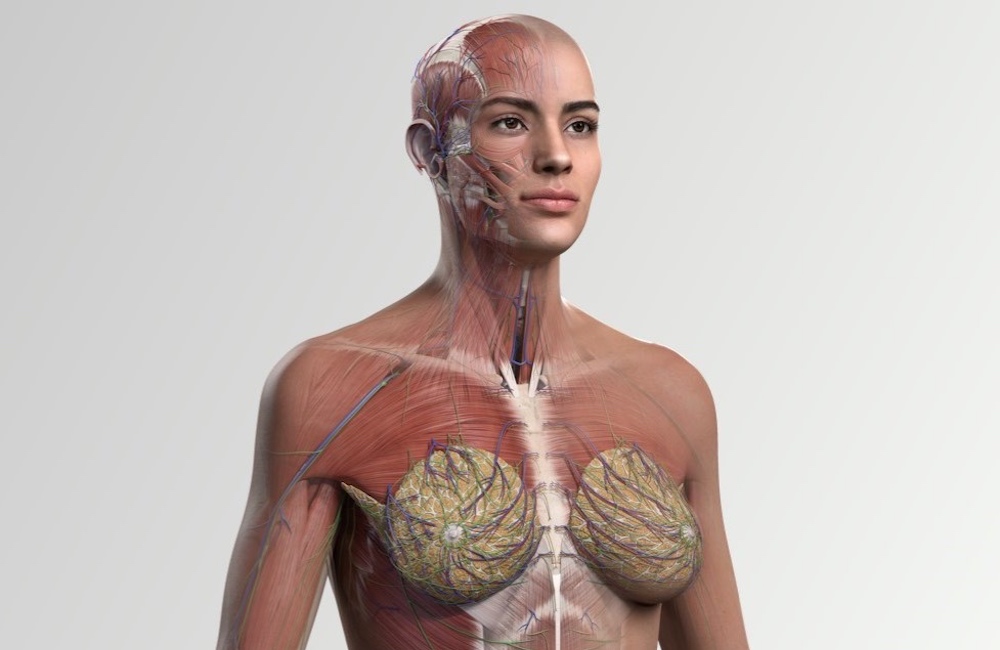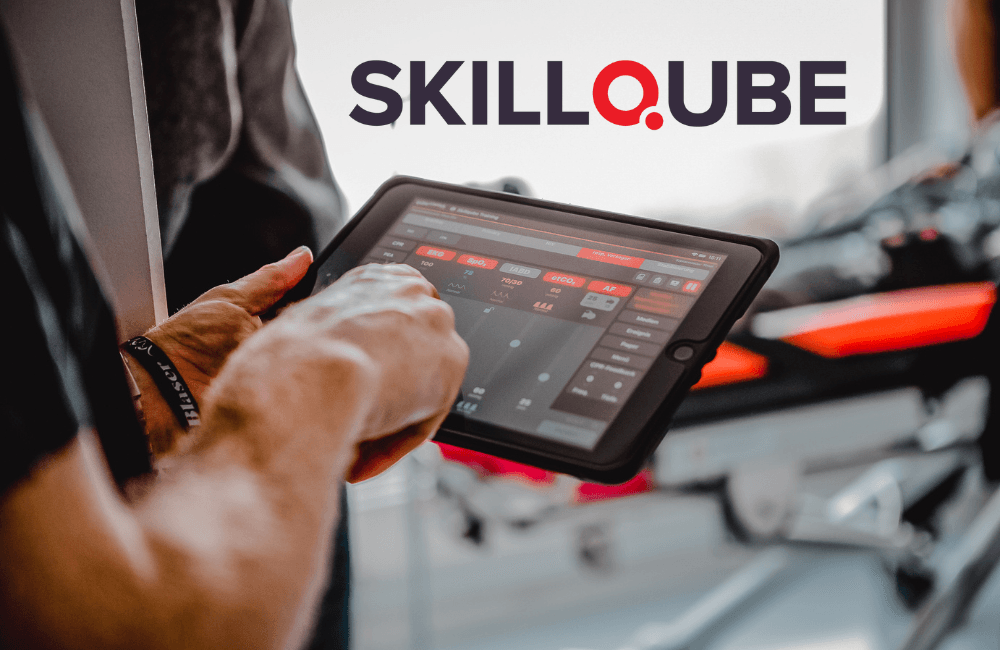At a time when females are more likely to be misdiagnosed for health conditions compared to male counterparts, the need for an advanced full female anatomy model has never been greater. To meet this need, the global leader in research publishing and information analytics, Elsevier, has developed a 3D full female model as part of the latest addition to its 3D platform, Complete Anatomy. This innovative 3D solution marks a major milestone in education equality with the representation of the full female anatomy in the study of the human body.
According to Elsevier, this is the first time that a female model has been built with this level of detail in its entirety, to represent the female — versus replacing specific areas of the male anatomy with female features. The solution further allows educators to visualize, edit and teach anatomy entirely from the female perspective, all in stunningly realistic 3D detail.
Complete Anatomy is a revolutionary cloud-based medical education platform from 3D4Medical by Elsevier. The platform is the No. 1 top-selling medical category app on iPad in the U.S., with over 20 million downloads globally. The company added that this launch signifies a major milestone in equal representation by preparing medical, nursing, and allied health students with the most complete understanding of the female anatomy. Historically, the full female anatomy has been underrepresented in the study of the human body.
Now, educators can choose the sex with which they’d like to teach their full curriculum, in addition to having the option of switching between male and female anatomies to teach comparative differences in sex-specific regions of the body. The Complete Anatomy female model provides educators with a more comprehensive teaching approach that allows them to switch seamlessly between teaching both female and male anatomy.
“As an advocate for content that is diverse and inclusive, we are thrilled to offer this groundbreaking full female model to allow educators to teach anatomy in an equal and comprehensive way,” Elizabeth Munn, Managing Director, Global Medical Education at Elsevier, said. “Complete Anatomy is continuing Elsevier’s rich heritage of innovation in education by delivering on our vision of providing transformative medical education solutions. We are proud to take this step forward in addressing gender bias and believe Complete Anatomy’s female model will have a tremendous impact on the educational experience of medical students worldwide as well as on the outcomes of patients they treat in the future.”
Informed by four years of expert research and development, anthropological data from specialist texts, academic papers, and customer feedback, the addition of the female model to Complete Anatomy’s 3D platform provides an unprecedented opportunity to study the female form in more detail than before. Complete Anatomy’s female model will benefit all courses that teach anatomy and is an essential virtual tool for learners studying outside the lab who need a deeper understanding of both male and female anatomy. The Complete Anatomy female model includes:
- The full skeletal system — A complete female skeletal system includes a wide array of unique features, rarely seen in anatomical texts. Sexual differences have been applied to areas such as the pelvis and skull. Long bones have been proportioned, and bone angles accurately reflect the uniquely female architectural skeletal base.
- Accurate portrayal of muscles — To create an accurate representation of the female anatomy, the overall volume of muscle mass for each muscle has been reduced by roughly 30%, in line with research findings from the broadest demographic of females as compared to males.
- Visually detailed female-specific regions — The female-specific regions have been created in detail that is equivalent to the male counterpart. Breast tissue can be hemisected or quartered to reveal the underlying tissues with a more accurate distribution and representative state of the mammary glands, now shown as nonlactating, unlike most anatomical resources. The reproductive organs from the internal and external genitalia have been remodeled to accurately show their continued relationship.
- Comparative functionality — Users can switch between models for comparative study on any part of the male and female forms, compare sexual differences and reveal the origin and distribution of nerves. Users can learn continuity from a “Gray’s Anatomy”-inspired atlas and dissection course, take quizzes, and watch videos to test their skills.
“One of the inherent dangers in using only the male body as ‘anatomical normal’ and the female body as a variation, is perpetuating sexist attitudes. This unconscious bias will be carried by learners into their future interactions with the body, including potentially with patients. Complete Anatomy is creating a platform of representation that is diverse, balanced, and most importantly, accurate,” Lead subject matter expert on the update Yasmin Carter, Ph.D., Assistant Professor of Translational Anatomy at the UMass Chan Medical School, Worcester, MA, said. “By giving educators the option to choose the female body as the basis for their students’ education, Elsevier is helping evolve equitable teaching practices by normalizing the female body. Complete Anatomy’s female model will support me in training the next generation of medical professionals to be more appropriate and inclusive.”
Elsevier has been working continuously to enhance its global portfolio of medical education solutions, digital learning tools, and analytics for medical and nursing students to prepare them for successful careers in health professions. Recently, Elsevier announced the acquisition of Osmosis, a visual learning platform for medical students and professionals, which followed other acquisitions in nursing and health education, including Shadow Health, a developer of virtual nursing simulations, and the 2019 acquisition of 3D4 Medical, the creator of the Complete Anatomy app. In addition, Elsevier launched ClinicalKey Student, an interactive medical education platform equipped with learning tools to support both students and faculty.
More About Complete Anatomy
Complete Anatomy from 3D4Medical by Elsevier is the world’s most advanced 3D anatomy platform. The revolutionary cloud-based education platform allows users to investigate the minute detail of the human anatomy in incredible 3D. Complete Anatomy is transforming medical learning and practice across the world, leading the way in the production of groundbreaking 3D medical technology.
Featuring over 2.5 million registered customers and over 20 million downloads globally, Complete Anatomy is used daily in over 350 top universities around the world as well as with global clinical organizations. Complete Anatomy’s award-winning software has been featured on stage at Apple and Microsoft events was honored as the winner of the Apple Design Awards in 2016 and is the No. 1 top-selling medical category app on iPad in the U.S. 3D4 Medical has been developing medical and anatomical products since 2009 and was acquired by Elsevier in 2019. 3D4 Medical by Elsevier has continued to provide industry-leading innovations that have allowed new ways for learners, educators, and those in the medical community to learn and understand human anatomy.
More About Elsevier
As a global leader in information and analytics, Elsevier helps researchers and healthcare professionals advance science and improve health outcomes for the benefit of society. The company does this by facilitating insights and critical decision-making for customers across global research and healthy ecosystems. In everything the company publishes, it upholds the highest standards of quality and integrity. Elsevier brings that same rigor to the company’s information analytics solutions for researchers, health professionals, institutions, and funders.








